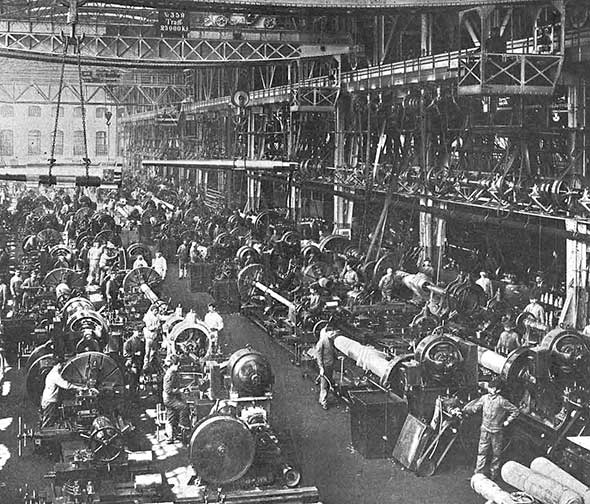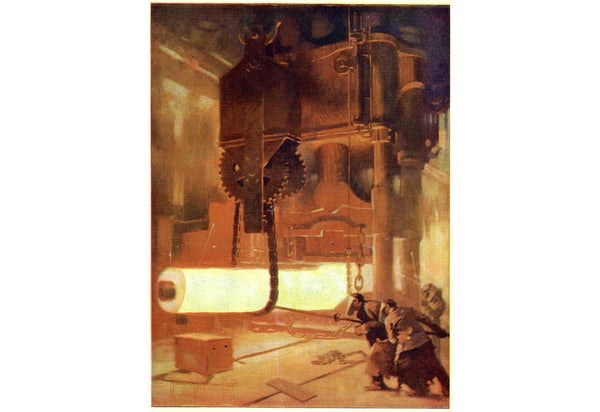This article was published in Scientific American’s former blog network and reflects the views of the author, not necessarily those of Scientific American
Reported in Scientific American, this Week in World War I: February 5, 1916.
As World War One progressed, military forces desperately needed heavier and heavier guns: naval guns for arming the largest “superdreadnought” battleships; railway guns brought in to bombard distant targets with huge shells; siege artillery for smashing the hardest targets.
The cover of the issue from February 5, 1916, shows workers forging the barrel for a large gun (perhaps in the Krupp works in Germany). Even if such a scene is worthy of illustrating literary works such as Dante’s Inferno or the ancient Greek mythologies on the blacksmith’s forge of the god Hephaestus, there was a deadly earnestness in the production and use of such weapons: the production capacity and technology used to produce them were a significant portion of the mass manufacturing dedicated to the war effort.
On supporting science journalism
If you're enjoying this article, consider supporting our award-winning journalism by subscribing. By purchasing a subscription you are helping to ensure the future of impactful stories about the discoveries and ideas shaping our world today.

The Krupp works in Germany, in a scene from just before World War One.
Image: Scientific American Supplement, August 31, 1912
Shells fired by the guns, large and small, caused most of the millions of casualties in the war. Ammunition for artillery was the war’s single greatest expense: World War One cost the equivalent of 5 trillion of today’s dollars, perhaps a fifth of the world’s industrial output for the years 1914 to 1918.
-
Our full archive of the war, called Scientific American Chronicles: World War I, has many articles from 1914–1918 on economic aspects of the First World War. It is available for purchase at www.scientificamerican.com/products/world-war-i/
